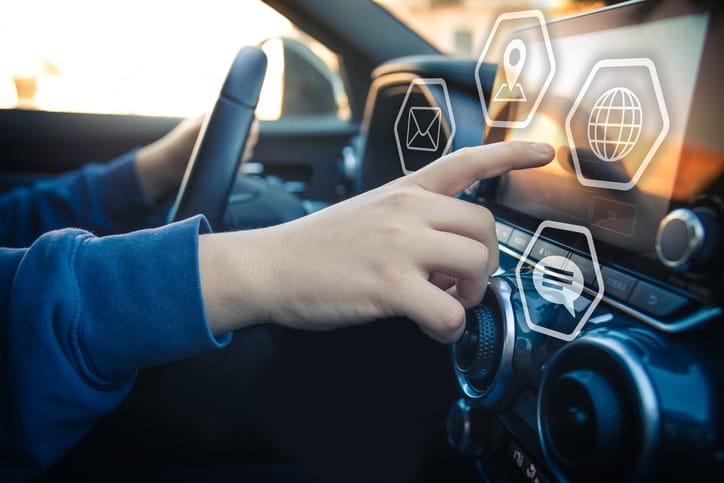Infotainment Systems Compared: User Experience Battle

In today's car landscape, the in-car experience goes far beyond just driving. Infotainment systems have become the central hub for entertainment, navigation, and even climate control. But with a growing number of manufacturers vying for dominance, the user experience (UX) has become a key battleground. Let's delve into the current state of infotainment systems, comparing some of the leading contenders and highlighting what makes a system truly user-friendly.
The UX Imperative:
Imagine this – you're on a road trip with a car full of passengers. Hunger pangs strike, but navigating the infotainment system to find a restaurant proves a frustrating task. Menus are cluttered, voice recognition struggles, and simple tasks turn into time-consuming detours. This is the exact scenario a poorly designed UX can create.
A good infotainment system should be intuitive, responsive, and minimize distractions while driving. It should integrate seamlessly with smartphones for features like Apple CarPlay or Android Auto, offering a familiar interface. Additionally, voice commands should be natural and accurate, allowing for hands-free operation.
Contenders in the Arena:
Now, let's put some of the major players to the test. Here's a breakdown of some popular infotainment systems with their strengths and weaknesses, focusing on UX:
- Tesla: Tesla's minimalist approach utilizes a large central touchscreen for almost all functions. While this provides a clean aesthetic, it can be distracting to constantly reach for the screen while driving. The lack of physical buttons for basic controls like climate can also be frustrating. However, Tesla shines in its seamless integration with the car's overall system and its ability to receive over-the-air updates for continuous improvement.
- BMW iDrive: BMW's iDrive system utilizes a rotary knob controller along with a touchscreen. This combination offers a good balance between minimizing screen interaction and providing easy access to menus. Voice commands are steadily improving, and the system integrates well with Apple CarPlay and Android Auto. However, the learning curve for navigating the menus can be steeper compared to simpler systems.
- Ford SYNC 4: Ford's SYNC 4 system features a user-friendly touchscreen with large, clearly labelled icons. The voice recognition is known for its accuracy, and the system integrates well with smartphones. Additionally, SYNC 4 offers split-screen functionality, allowing you to view navigation and climate controls simultaneously. A drawback can be the occasional lag in responsiveness, especially when compared to some competitors.
- General Motors (GM) User Interface: GM's infotainment system offers a clean interface with physical buttons for essential functions like climate control. This reduces driver distraction. However, the touchscreen itself can be on the smaller side, and some users have reported sluggish response times. Integration with Apple CarPlay and Android Auto is available, but the overall feature set might feel less extensive compared to some competitors.
- Stellantis Uconnect: Stellantis' Uconnect system boasts a customizable layout and large, easy-to-use buttons. Voice commands are improving, and the system integrates well with smartphones. However, some users have reported occasional glitches and a steeper learning curve compared to simpler interfaces.
Beyond the Big Names:
It's important to note that these are just a few examples. Luxury car brands like Audi, Mercedes-Benz, and Lexus also offer sophisticated infotainment systems, often with a focus on high-resolution displays and advanced features. However, these systems can also come with a steeper learning curve and potentially higher repair costs.
The User's Voice:
Independent reviewers and consumer reports are valuable resources when evaluating infotainment systems. They often provide a more objective perspective, highlighting both the strengths and weaknesses of each system based on real-world testing. Additionally, car forums and online communities can offer valuable insights from actual users, sharing their experiences and frustrations with specific systems.
Looking Ahead:
The future of infotainment systems is constantly evolving. With the integration of artificial intelligence and more advanced voice recognition, systems are expected to become even more intuitive and personalized. Additionally, advancements in augmented reality (AR) could potentially overlay navigation instructions onto the real world through the windshield, further minimizing driver distraction.
The Bottom Line:
The "best" infotainment system ultimately depends on individual needs and preferences. Consider your priorities – a minimalist interface, extensive features, strong smartphone integration, or physical buttons for essential functions. By researching different systems, reading reviews, and even taking advantage of test drives, you can choose the infotainment system that will enhance, rather than detract from, your driving experience.
In conclusion, the UX battle within infotainment systems is far from over. As technology progresses, manufacturers must prioritize user-centric design that keeps drivers safe and engaged on the road. By understanding the current landscape and staying informed about future trends, you can navigate your way to the perfect in-car entertainment experience.
